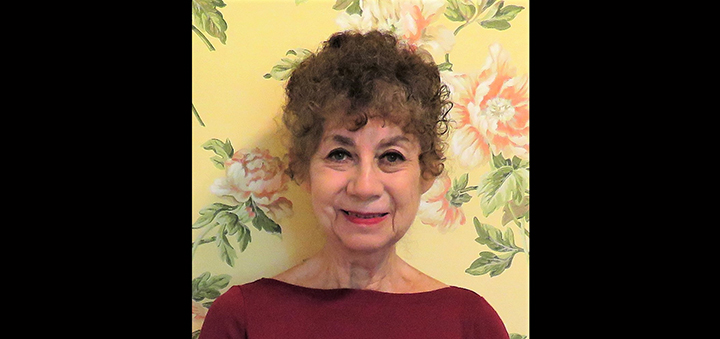Tilting At Windmills: The Case Of Camouflaged Clues
Published:
April 22nd, 2022
By:
Shelly Reuben

It is said that a man can never “be a hero to his valet,” because the more we know about a person, the less we respect him. But I was closer to Charlie King than any valet, and he was always a hero to me.
I didn’t know him back in the days when he was fighting fires and saving people from burning buildings, but it was never his physical strength, stamina, or bravery that inspired my stunned admiration (although his diamond blue eyes did play a part). It was his meticulous approach to fire investigation, his slow but steady ability to observe, analyze, and deduce, and his take-no-prisoners ability to get at the truth.
Take, for instance, the case (all names changed) of Marva Birdie vs. Holdforth, Inc.
Marva was the divorced mother of three, living on welfare in a rented house in a poor section of Detroit. She had two older sons, Jerome, age 22, and Arnold, age 18, as well as 19-month-old Declan.
Just before midnight on a frigid Tuesday in January, Mrs. Birdie’s neighbor, Marigold DeLong, heard glass breaking, followed immediately by an explosion. She looked out her porch door, and saw dark smoke streaming out the front bedroom window of the house next door, where Marva Birdie slept on a single bed across from baby Declan’s crib. Mrs. Delong called 911. When she next looked outside, firefighters had arrived, and smoke had turned to flames.
In a witness statement taken a few days later, Luther Leonard, who lived across the street from Mrs. Birdie, stated: “Marva came to my house and told me that someone threw a firebomb through the bedroom window where the baby was sleeping, and that Declan was badly burned. Marva was burned on her arms from getting Declan out of the house ... I think it’s a shame that someone would throw a firebomb into a house and seriously injure a small baby.”
The day after the fire, the local fire marshal visited the premises, but he never went inside; he never examined the electrical outlets, the circuit breaker box, the flooring, walls, or halls. In his report, he said, “The house was locked at the time of my investigation, and therefore I conducted it through the window of the involved bedroom.”
From that long-distance perspective, he concluded that “the fire originated in a portable television set on top of a dresser in the bedroom, and extended to and throughout the room, charring the ceilings, walls, and exposed surfaces.” He also wrote that Mrs. Birdie had bought the television “less than a year ago, there had never been a problem with it, and there had been no problems with any of the electrical systems in the house.”
So, now we have two alternate realities.
VERSION ONE – ON THE NIGHT OF THE FIRE: Marigold DeLong hears the sounds of breaking glass and an explosion, and sees smoke coming out of Mrs. Birdie’s front window. She calls 911, and after the firefighters arrive, she sees flames shooting out that same window. Minutes later, Luther Leonard, the neighbor across the street, states that Marva Birdie ran frantically to his house and told him someone had thrown a fire bomb through her window.
VERSION TWO – THE DAY AFTER THE FIRE: the fire marshal interviews the homeowner, looks through the house’s front windows, and takes no photographs. He concludes that the television set, which he did not examine or retained as evidence, caused the fire.
Fast forward six months to ... can you guess what’s coming next?
Right! The lawsuit ... in which Marva Birdie sues those who manufactured the TV, the mattresses on her bed and the crib, her bathrobe, and the baby’s pajamas. She also claimed that she could identity when and where she had bought each item, and she sues each store, too, although she had no receipts,
Charlie was brought into the case by Holdforth Inc., who made the portable TV that the fire marshal said caused the fire. Shortly before Mrs. Birdie initiated her lawsuit, somebody (no one admitted to doing it, and the owner of the house was never found) made repairs to the bedroom, completely painted over the floors, walls, and ceiling, and replaced the front window glass with Plexiglas.
As Charlie described it, “When I arrived in Detroit, there were at least $95,000 worth of experts assembled in the front bedroom, if you take into account their travel time, hourly rates, and expenses.” This included two fire investigators, a consulting engineer, and a forensic chemist, and doesn’t even take into account the fees of the three attorneys.
By this time, we had learned more about Marva Birdie’s children through witness statements.
Jerome, the oldest, had been arrested for assault and battery five times and attempted murder once. Meanwhile, Marva’s 18-year-old, Arnold, was working as a delivery boy for a dope dealer. After a rival gang stole Arnold’s beeper, Jerome caused them unspecified injuries, and in response, they threw a Molotov cocktail through the window of his mother’s house. But the charges against them were always dismissed, because the complaining witnesses failed to appear when the cases came to court (Gee. I wonder why?).
Upon these revelations – or so we assumed – the accusations against the manufacturers would be dropped.
Not so!
Mrs. Birdie’s lawyers maintained that the fire marshal’s “l looked-through-the-window” determination was valid, and that our client’s television set had caused the fire.
Such were the circumstances on the day when Charlie, along with three other experts, stood inside a room that had gone on flames almost two years before, in which all surfaces had been covered with paint.
What to do? What to do?
And that, while others were pondering the impossibility of their situation, was when Charlie King snapped his fingers and said, “Let’s remove it.”
Five gallons of paint thinner later, and using special equipment to penetrate a thin layer of paint covering the walls, it became possible to “read” the burn patterns in of Mrs. Birdie’s front bedroom ... from the point where a Molotov Cocktail burst into flames in the middle of the floor ... to the trail of fire that literally gouged into the floorboards ... to the walls, ceiling, bedding, dresser, television set on top of the bureau ... and eventually through the bedroom door and into the hall.
Because the floor had been coated in paint, the accelerant from the firebomb was sealed inside, and did not evaporate over the ensuing years. Sections of flooring were cut out, sent to a laboratory, and subjected to gas chromatography and mass spectrometry tests, where “the presence of flammable liquid accelerant was detected in the samples submitted.”
Plaintiff’s attorney was not happy with these test results, but remained confident that in the long run, a jury would sympathize with Mrs. Birdie because of Declan’s horrible injuries, and deliver a huge settlement into his lap. That fantasy ended mere days before the trial, however, when Jerome approached Holdforth’s lawyers saying, “If you give me two thousand dollars, I will give you the bottle from the Molotov cocktail.” They negotiated Jerome down to two hundred dollars, at which point the sheriff, who was listening in the next room, arrested Mrs. Birdie’s oldest son.
After that, of course, the lawsuit disappeared.
Would our client have won it if Jerome hadn’t resorted to extortion? I don’t know. I do know that our side was disappointed the case didn’t go to trial, because once the paint had been removed and the Molotov cocktail burn patterns exposed, they knew that they had a slam dunk.
As for me, once again, I got to play Watson to Charlie’s Sherlock, and shake my head in in awe at the ease with which, Houdini-like, he made obstacles disappear when he was determined to solve a case.
Copyright © Shelly Reuben, 2022. Shelly Reuben’s books have been nominated for Edgar, Prometheus, and Falcon awards. For more about her writing, visit www.shellyreuben.com
Author: Shelly Reuben - More From This Author
Comments







